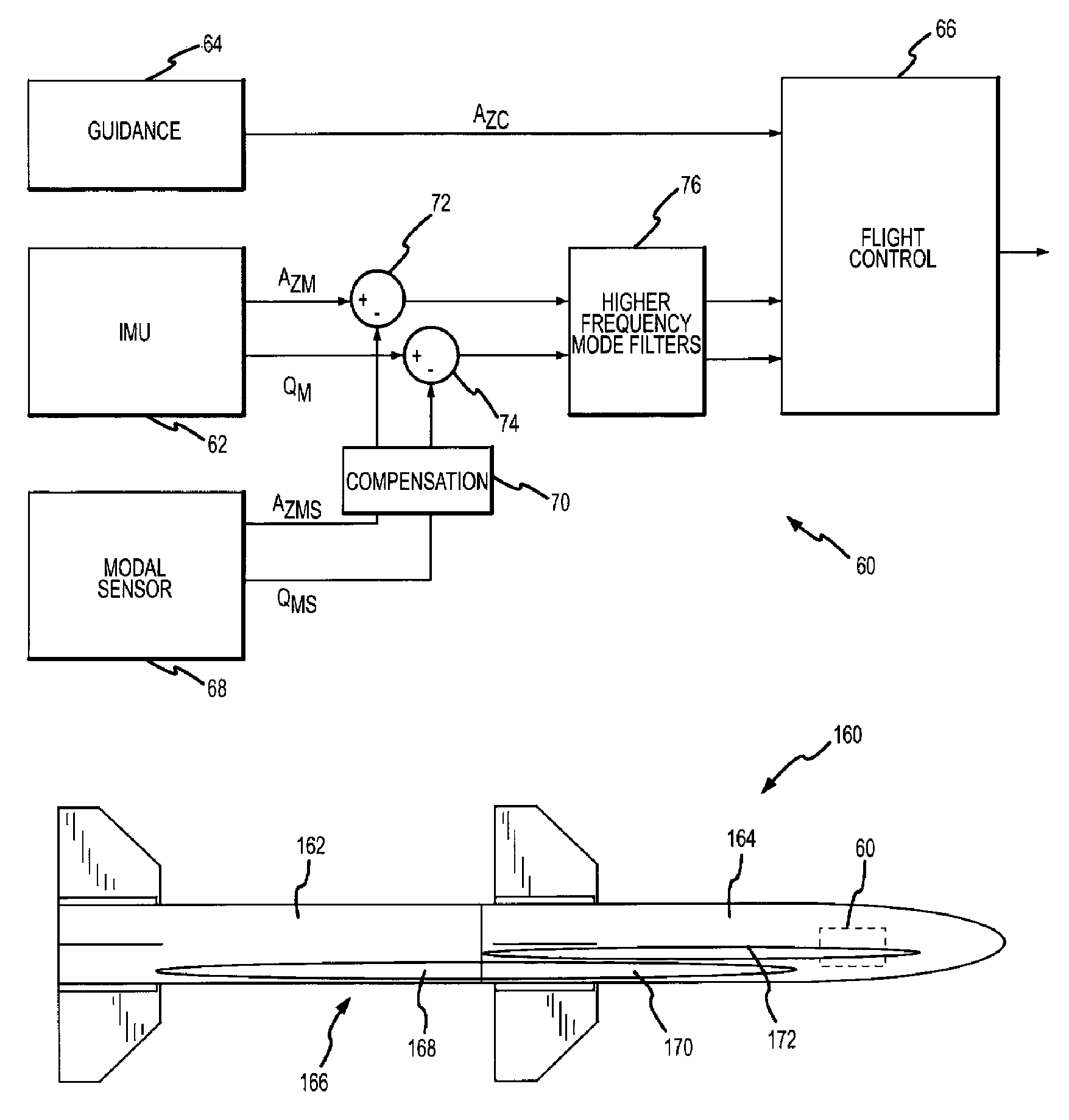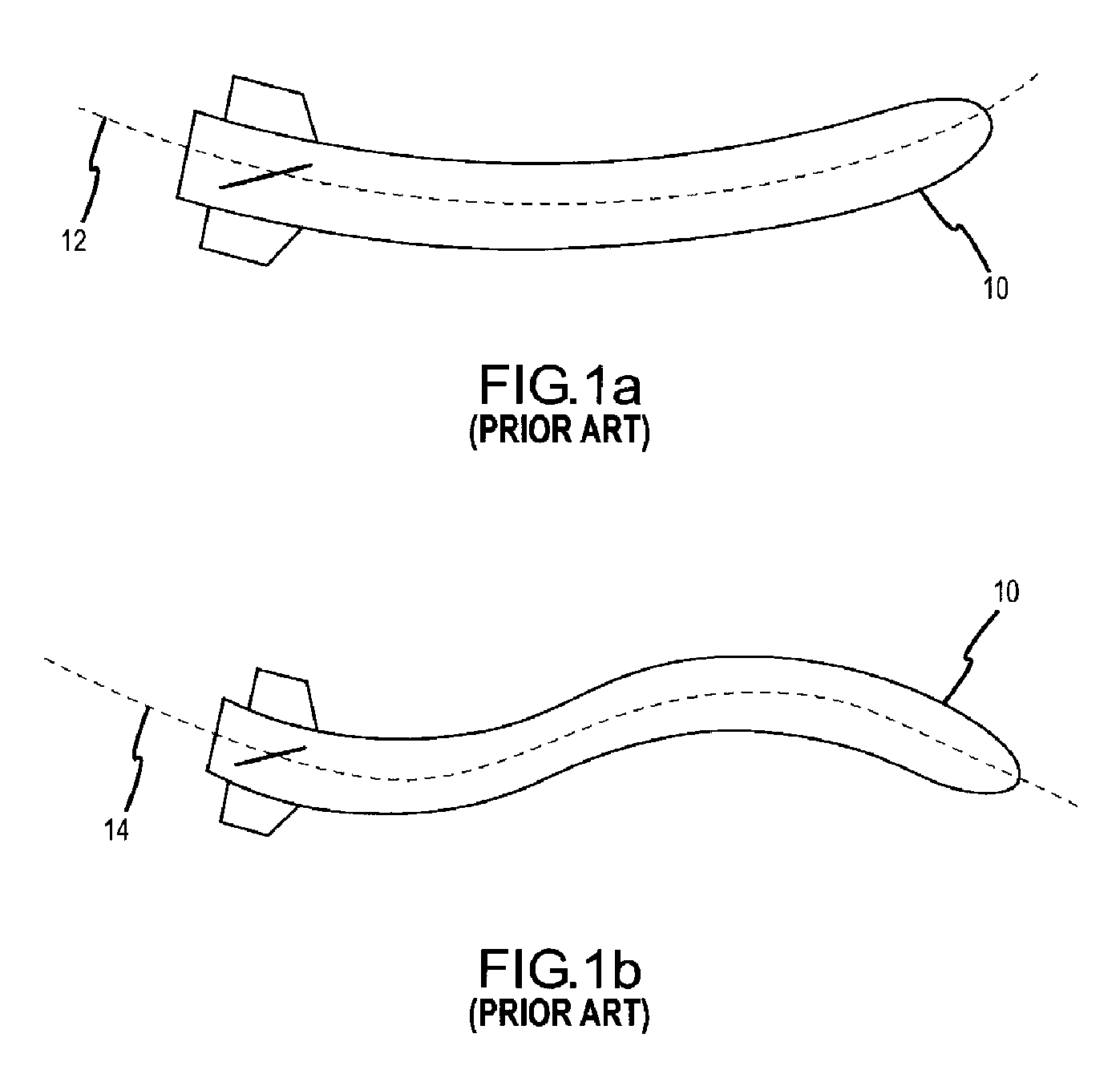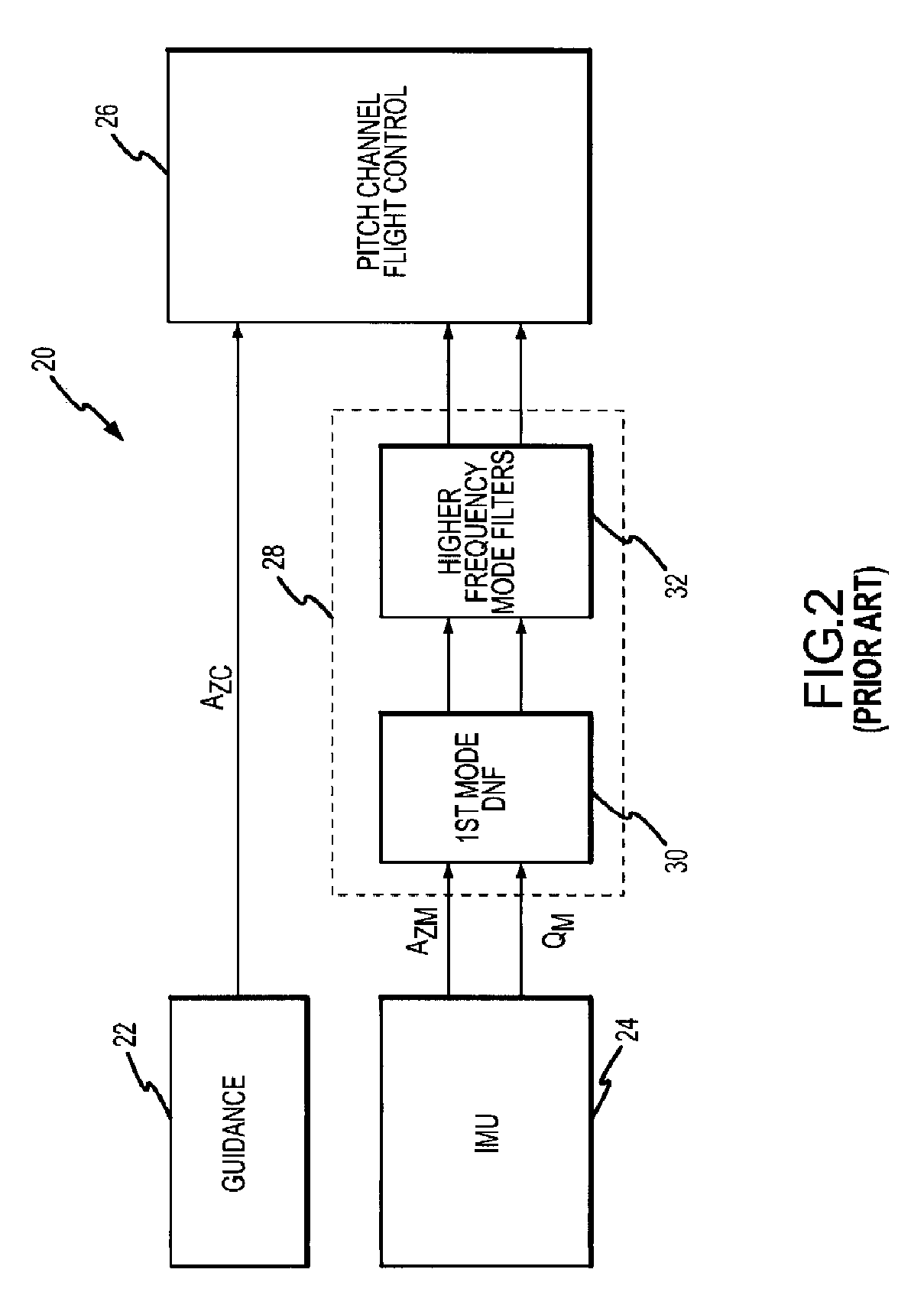Flight control system and method of using piezoelectric modal sensors to mitigate flexible body dynamics
a flexible body and control system technology, applied in the field of flight control systems, can solve the problems of system self-exciting vibration, system instability, system failure, etc., and achieve the effect of reducing the risk of system failure, and simple and inexpensive mechanisms
- Summary
- Abstract
- Description
- Claims
- Application Information
AI Technical Summary
Benefits of technology
Problems solved by technology
Method used
Image
Examples
Embodiment Construction
[0030]The present invention provides a simple and inexpensive mechanism to sense and mitigate the effects of flexible body dynamics on the flight control system for a flight vehicle without causing latency problems in the control loop. Modal sensors provide rate and possibly acceleration information for at least one flexible body mode of the flexible airframe component, suitably at least the 1st lateral bending mode for both pitch and yaw, so that the data provided to the flight controller more closely represents only the rate and acceleration of the flight vehicle's rigid airframe component, particularly at frequencies at or below the flight control bandwidth. Piezoelectric sensors can be configured to sense the strain induced by particular flexible body modes without inducing additional phase loss in the control loop. As sensor technology continues to advance, other known or new technologies may also provide the capability to sense these flexible body modes without phase loss. Thi...
PUM
 Login to View More
Login to View More Abstract
Description
Claims
Application Information
 Login to View More
Login to View More - R&D
- Intellectual Property
- Life Sciences
- Materials
- Tech Scout
- Unparalleled Data Quality
- Higher Quality Content
- 60% Fewer Hallucinations
Browse by: Latest US Patents, China's latest patents, Technical Efficacy Thesaurus, Application Domain, Technology Topic, Popular Technical Reports.
© 2025 PatSnap. All rights reserved.Legal|Privacy policy|Modern Slavery Act Transparency Statement|Sitemap|About US| Contact US: help@patsnap.com



